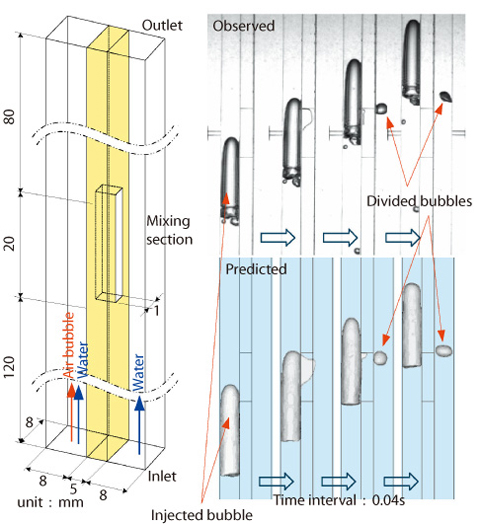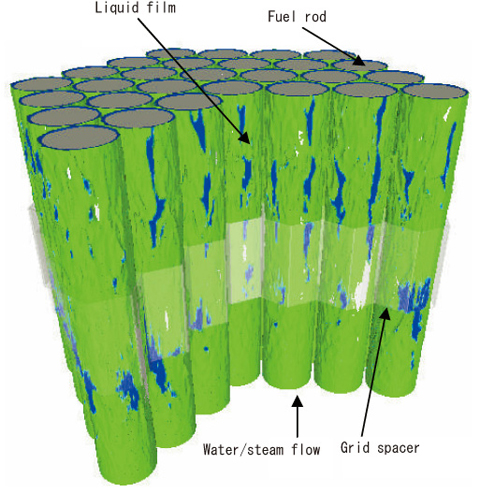
Fig.7-6 Predicted dynamics of bubbles moving through a mixing section

Fig.7-7 Predicted two-phase flow behavior in the tight-lattice rod bundle
Thermal-hydraulic design of the current boiling water reactor (BWR) is performed by correlations with empirical results of actual-size tests. Then, when the reactor of new design is developed, an actual size test that simulates its design is required to confirm or modify the correlations. Development of a method that enables the thermal-hydraulic design of nuclear rectors without these actual size tests is desired, because these tests take a long time and entail great cost.
For this reason we developed an advanced thermal-hydraulic design method for BWRs using innovative two-phase flow simulation technology. For this, the following are required: (1) an advanced simulation method with high accuracy prediction, (2) verification of simulation method; and, (3) capability to analyze enormous amounts of data.
We are developing an advanced interface tracking method which improves fluid volume conservation, to enable high accuracy prediction of two-phase flow. It was incorporated in the detailed two-phase flow simulation code: TPFIT. We tried to verify the TPFIT code comparing with experimental results.
In one test, the TPFIT code was applied to the 2-channel air-water mixing (Fig.7-6). The fluid mixing was observed at a gap between ducts in the experiment. Bubble dynamics through the gap and cross flow behavior could be effectively predicted by the TPFIT code.
The parallel computation of TPFIT code was conducted for the large-scale simulations. The TPFIT code was applied to the two-phase flow analysis of a tight -lattice rod bundle and its high adequateness capacity for large scale simulations was confirmed (Fig.7-7).
This paper contains some results obtained within the task "Development of Fuel Assembly for Very High Burnup Water-cooled Breeding Reactor" entrusted from the Ministry of Education, Culture, Sports, Science and Technology of Japan.
<Previous: 7 Nuclear Science and Engineering Research | Next: 7-3 >